A Condo Built Specifically For The Elderly In Singapore? 5 Features We’d Like To See In Such A Development
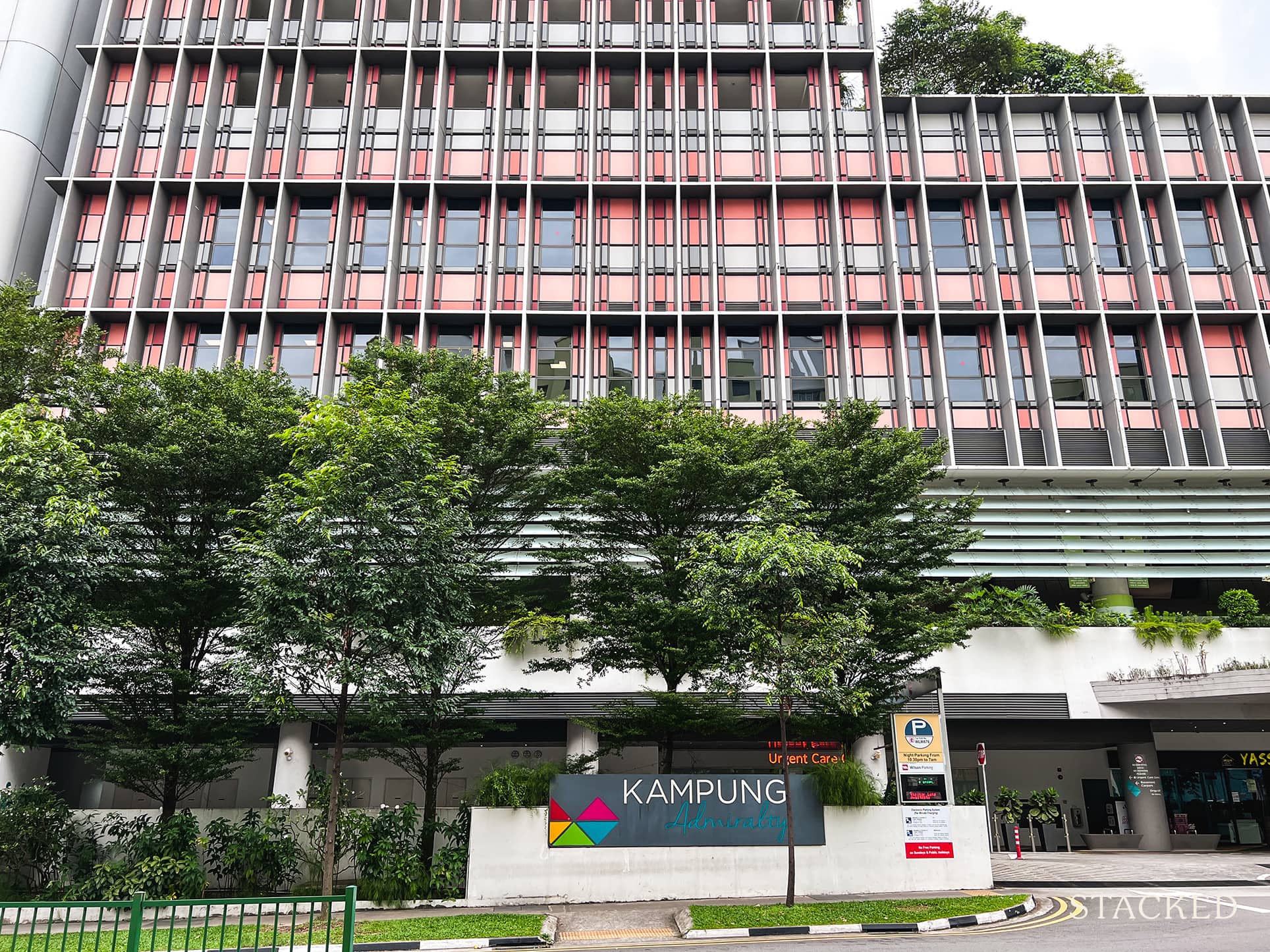
Get The Property Insights Serious Buyers Read First: Join 50,000+ readers who rely on our weekly breakdowns of Singapore’s property market.
A seasoned content strategist with over 17 years in the real estate and financial journalism sectors, Ryan has built a reputation for transforming complex industry jargon into accessible knowledge. With a track record of writing and editing for leading financial platforms and publications, Ryan's expertise has been recognised across various media outlets. His role as a former content editor for 99.co and a co-host for CNA 938's Open House programme underscores his commitment to providing valuable insights into the property market.
Let’s face it: Singapore’s unofficial senior care body has become HDB. When it comes to housing for retirees, there’s an overwhelming assumption that most people can sell their private property and move into flats. That’s why HDB constantly has to innovate schemes like assisted living flats, design neighbourhoods around ageing populations, elder-proof flats, etc.
HDB has even taken it a step further with the creation of Kampung Admiralty, a 104-studio apartment development specifically for the elderly. There’s a medical centre, hawker centre, active ageing hub (communal activities such as music sessions and cooking classes), and a community farm and vertical garden.
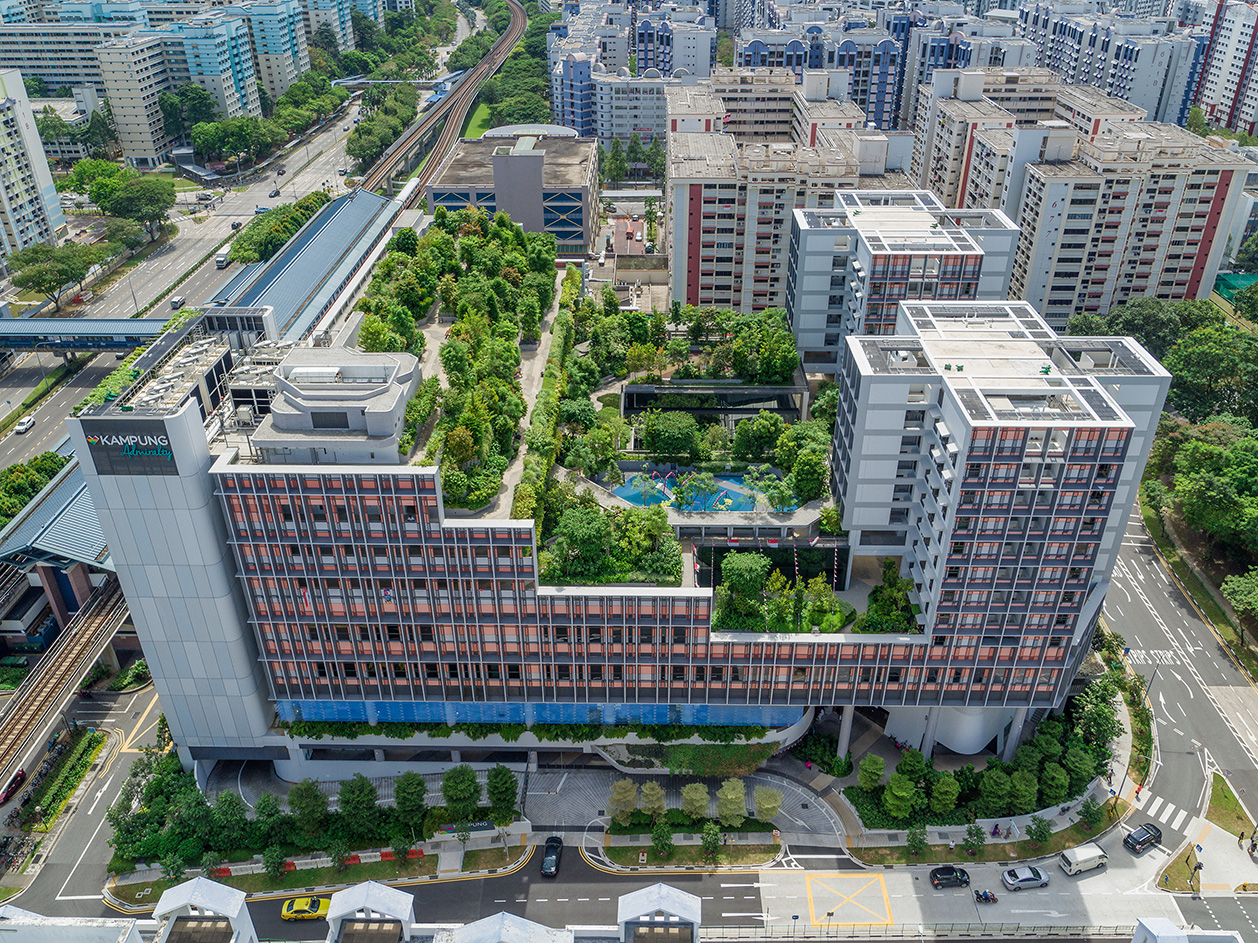
Besides the exterior, the interior has also been carefully considered. Induction hobs, retractable clothes drying rack, and slip/moisture resistant vinyl strip flooring have also been installed to help make living at home safer and more convenient.
As for condos, a sort of unofficial ageist divide is forming: condos are overwhelmingly catered to younger crowds, and we almost never hear developers talk about features designed to aid seniors. At most, there are some scattered facilities for older residents; like a foot reflexology path, or a herb garden.
Perhaps it’s time our developers took a cue from foreign counterparts:
Table Of Contents
- Foreign developers are already eyeing seniors as a potential customer base
- It’s a mistake for developers to ignore seniors
- Not all seniors see “right-sizing” as moving into a flat
- 1. Different lease lengths besides 99 years
- 2. Slight modifications to security or concierge services
- 3. Shuttle bus services for seniors
- 4. Focus on the quality of facilities over number of facilities
- 5. Lineup of activities
Foreign developers are already eyeing seniors as a potential customer base
In Thailand, for instance, developers like Nye Estate (a subsidiary of Narai Property Co) have been developing independent living units for senior residents, and are looking at further properties. This comes in the form of renovating a suspended riverside condo in Nonthaburi. Japan, which has an even tougher ageing population issue than Singapore, already has developers which build different tiers of housing for seniors; and the country already has three healthcare-real estate investment trusts.
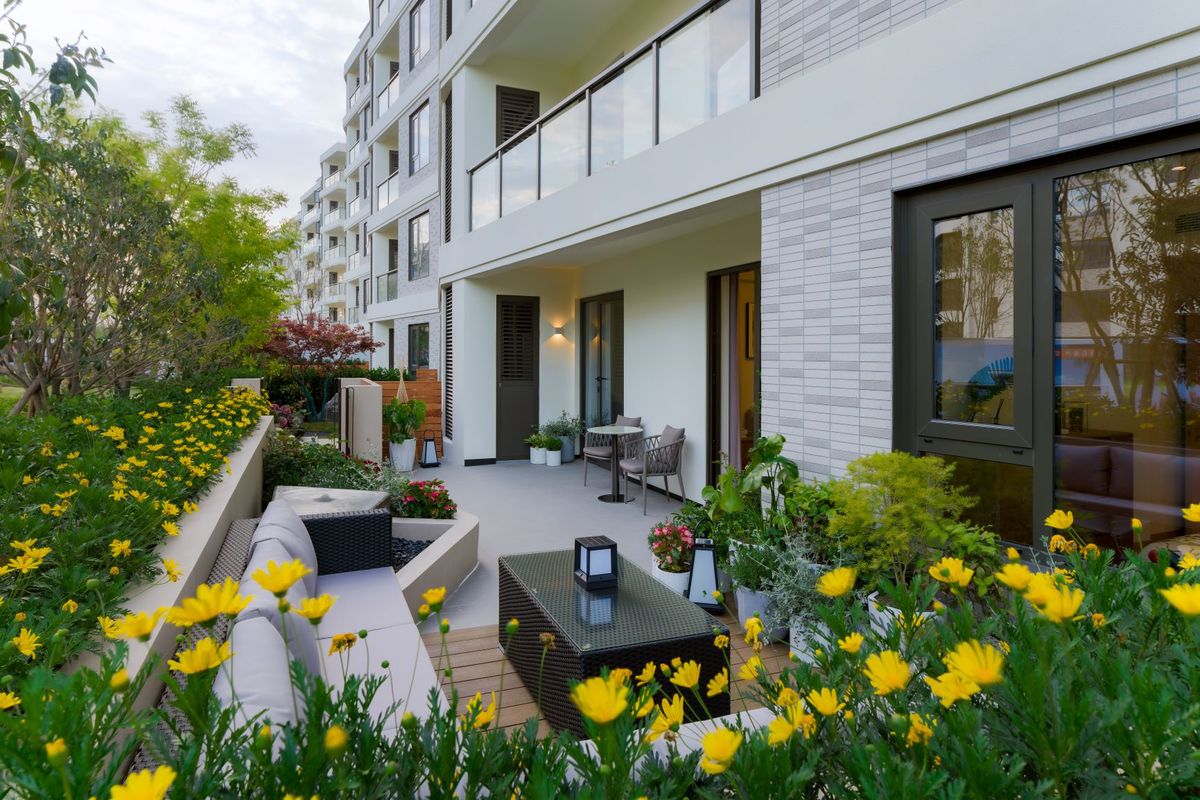
In China, Australian developer Lendlease – also behind Paya Lebar Quarter (PLQ) in Singapore – recently unveiled Ardor Gardens. This is a 900-unit residential development, with facilities targeted at senior living. This is undoubtedly more of a premium offering, with luxury hotel-trained staff providing 24-hour concierge service, senior-friendly gyms, and a wide range of activities like dance classes and wellness seminars. These do not come cheap, however, as you’d have to pay a one-time membership plus a monthly service fee. Prices start from about US$185,000 for a one bedder on a 15-year lease. The monthly fee is about US$760 per month, and that covers cleaning, butler service, health checks, green channels to the hospital, and the use of facilities.
In Singapore however, developers haven’t shown as much interest in this growing demographic. The most serious private developer effort we can think of is The Hillford, a 60-year lease property that was completed in 2016. This was marketed as a senior citizens’ resort, with matching facilities and added safety precautions.
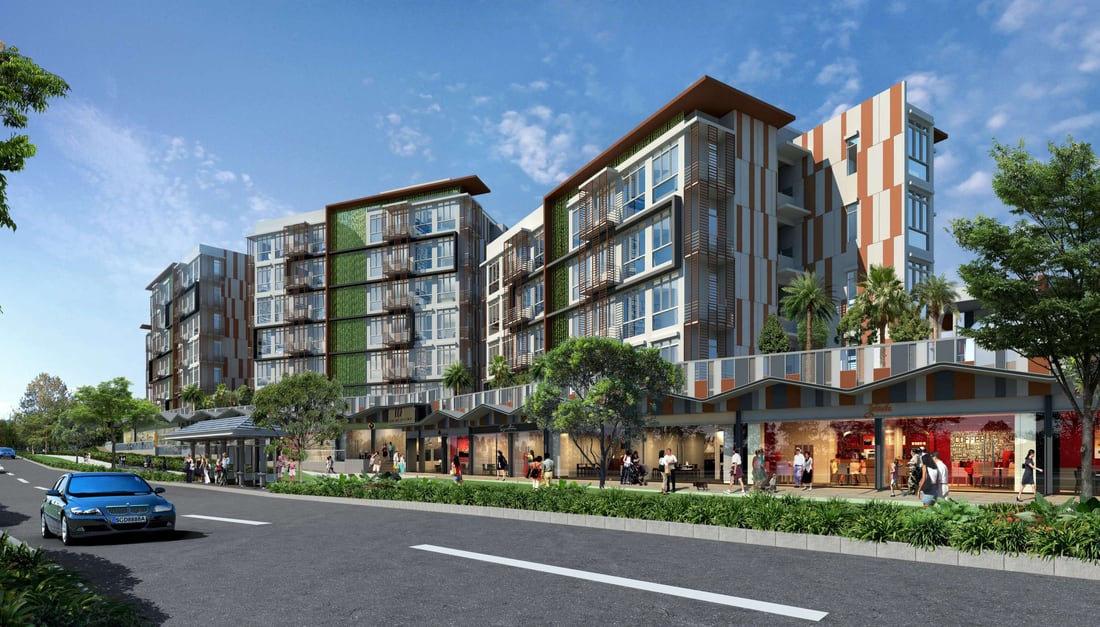
Should You Invest In A 60-Year Leasehold Residential Property? A Case Study On The Hillford
by Ryan Ong(Ironically, we also note that some buyers of The Hillford aren’t even senior citizens – they’re just buyers who wanted an affordable Rest of Central Region address).
Other attempts include the 63 “Gold Standard” 1-bedroom units at JadeScape that were catered for the elderly/handicapped. These units would be fitted with anti-slip tiles and support bars in the toilets as well as a number of other modifications, but due to little demand, it was scrapped entirely by the developer.
Other than this, we’ve yet to see a private development marketed specifically toward senior citizens.
It’s a mistake for developers to ignore seniors
We don’t just mean this from the humane angle, although that of course is true. But it makes sense when you look at the population demographics.
By 2030, one quarter of the Singapore population will be aged 65 and older. By the year 2050, about half of us will be 65 and older. Young people are a shrinking demographic – but developers seem reluctant to reposition toward seniors.
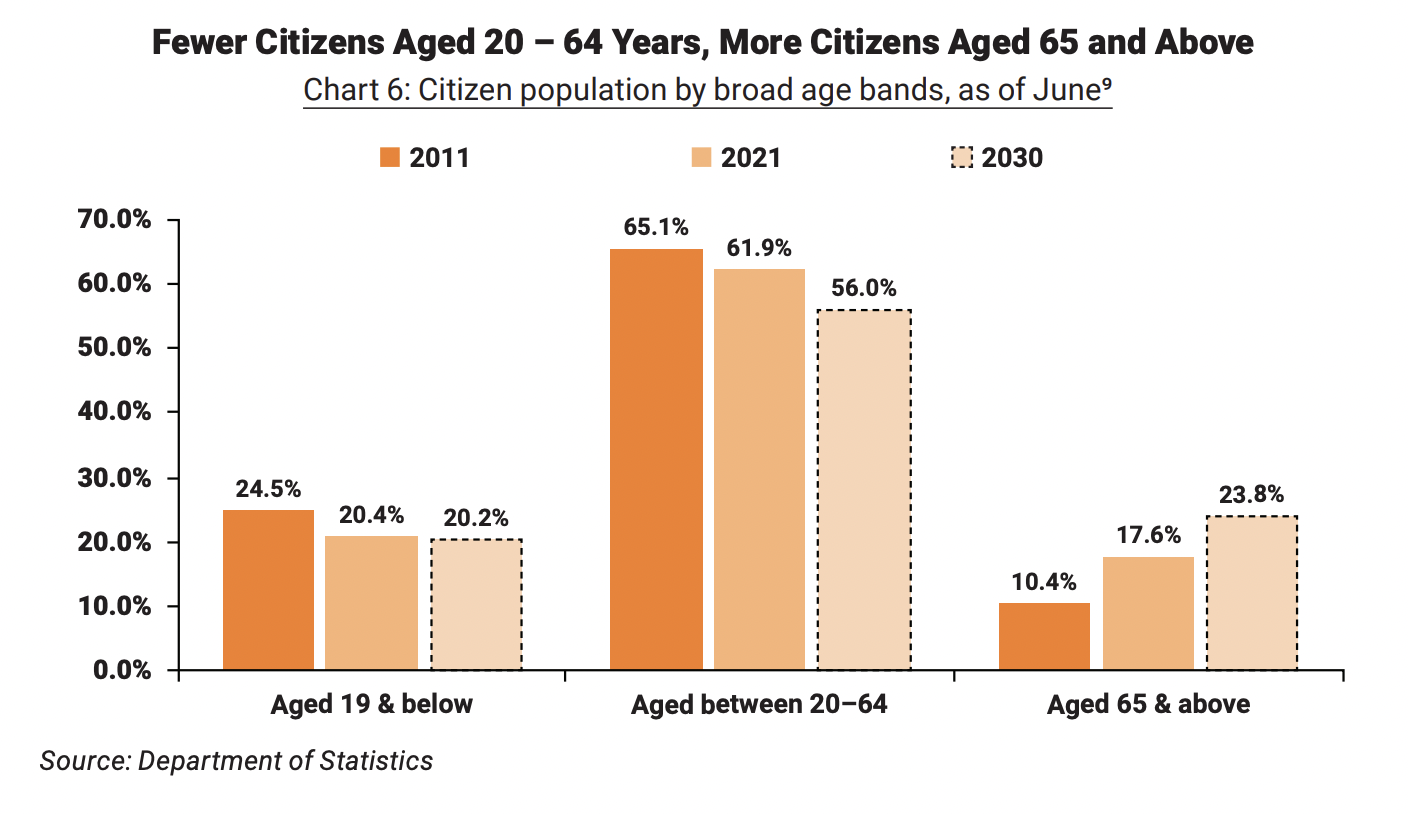
Besides seniors being a growing demographic, keep in mind that Singaporeans are savers: you have to be, whether you want to or not (CPF sees to that). At an average savings rate of 53.8 per cent, we’re among the world’s top savers – and senior citizens have had more time to grow their CPF, or accumulate other assets.
Most young Singaporeans can’t afford a condo from the get-go, and it’s a norm for most of us to start with a BTO or resale flat. But older Singaporeans, who have had decades to save up, may be in a better position to afford a private property (if nothing else, they may have sale proceeds from selling off their flat).
Even setting aside the primary reasons for a balanced property market, catering to society’s needs, etc., developers should recognise that quite often, older Singaporeans are the ones with the purchasing power to be their customers.
Not all seniors see “right-sizing” as moving into a flat
While right-sizing to a flat is still a common assumption, attitudes are changing.
It’s less uncommon now for some seniors to opt for smaller one or two-bedder condo units. This is sometimes ideal for seniors who need to live in a private compound (condos have 24/7 security), or who have difficulty with more densely packed housing. In condos, for instance, it’s possible to find projects with only one neighbour per floor; and some seniors may require this for peace of mind.
One particular factor, which was brought up by an older reader, is that her family visited more often when she moved from her resale flat to a condo – BBQ pits, pools, and gyms are more reasons for children or grandchildren to come over.
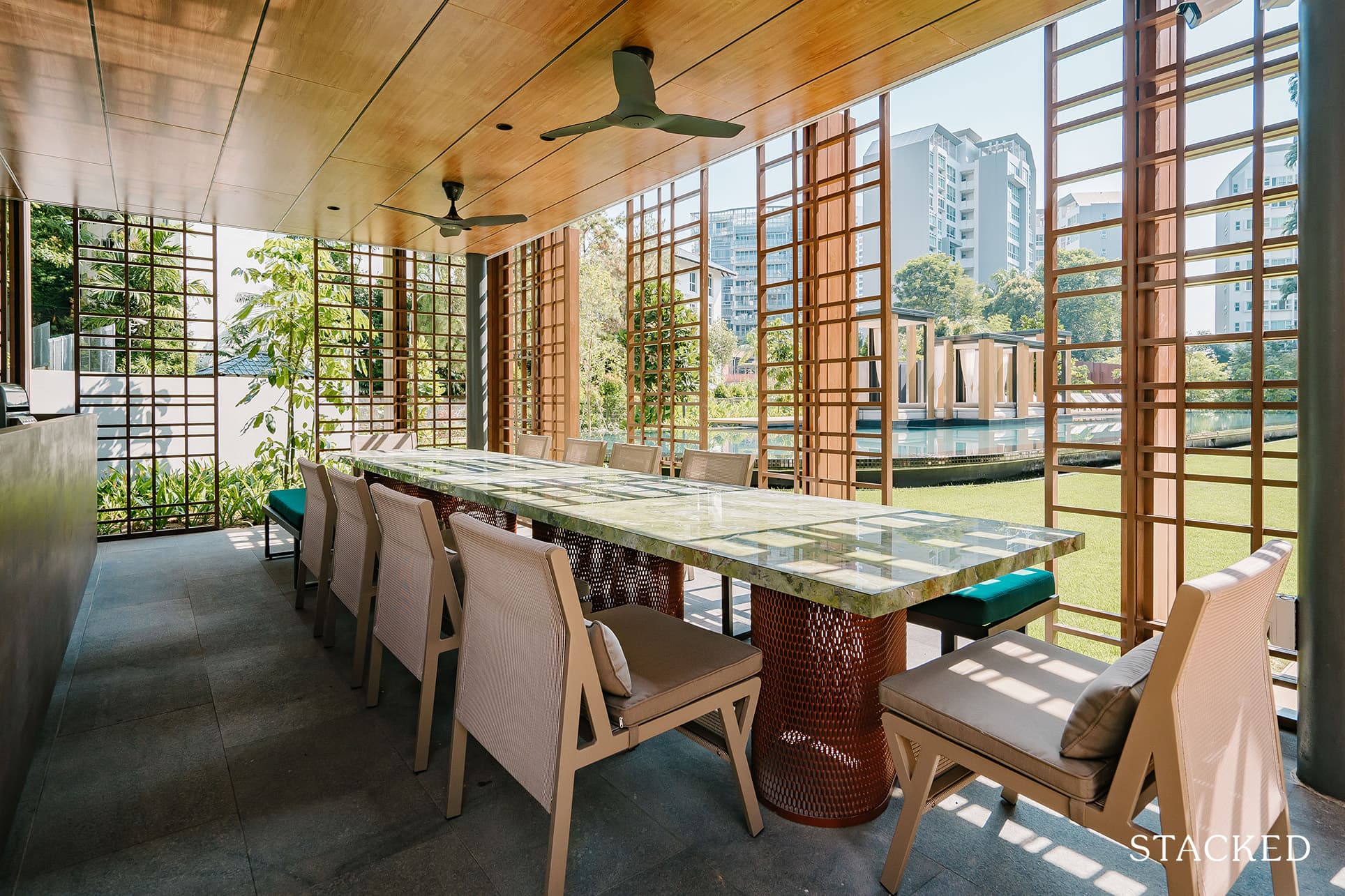
In fact, for owners of shoebox units, right-sizing senior citizens form a significant pool of future buyers (as their units are too small for families).
Singapore’s dual-key condos are also good for senior citizens who want to live with their children. This may even be a superior arrangement, compared to having one’s parents live in a far-off estate; a split unit can maintain privacy for both sides, while keeping the family together.
More from Stacked
Can’t Afford The Property You Want In 2023? Here Are 4 Things You Can Do
One of the common complaints we’ve been hearing is about buyers priced out of the property market in 2022. This…
All that’s needed is for developers, and perhaps regulators, to add a few tweaks to make condos more “senior-oriented”.
Changes that could make Singapore private property better for seniors
Some of the tweaks could include:
- Different lease lengths besides 99 years
- Slight modifications to security or concierge services
- Shuttle bus services for seniors
- Focus on the quality of facilities over number of facilities
- Lineup of activities
1. Different lease lengths besides 99 years
As The Hillford shows, we can have condos that are on 60-year leases. Certainly, varying the lease has helped HDB tremendously in catering to older buyers.
Private properties on shorter leases are more affordable, have no significant disadvantage to owners aged 65 and older*, and may even help with urban planning (as the plots are zoned for shorter periods, there’s more flexibility in land use).
One of the problems we’d expect, however, is for investors seeking rental yield to compete for the same condos. This may require some regulation; just as we may have to dissuade younger Singaporeans from purchasing such short-lease homes.
*Barring legacy planning, as our emphasis here is on home ownership. There would likely be no resale value in these properties.
2. Slight modifications to security or concierge services
Condos already have security guards, and some higher-end condos have concierge services. With a little bit of tweaking, this can be angled to serve senior residents better.
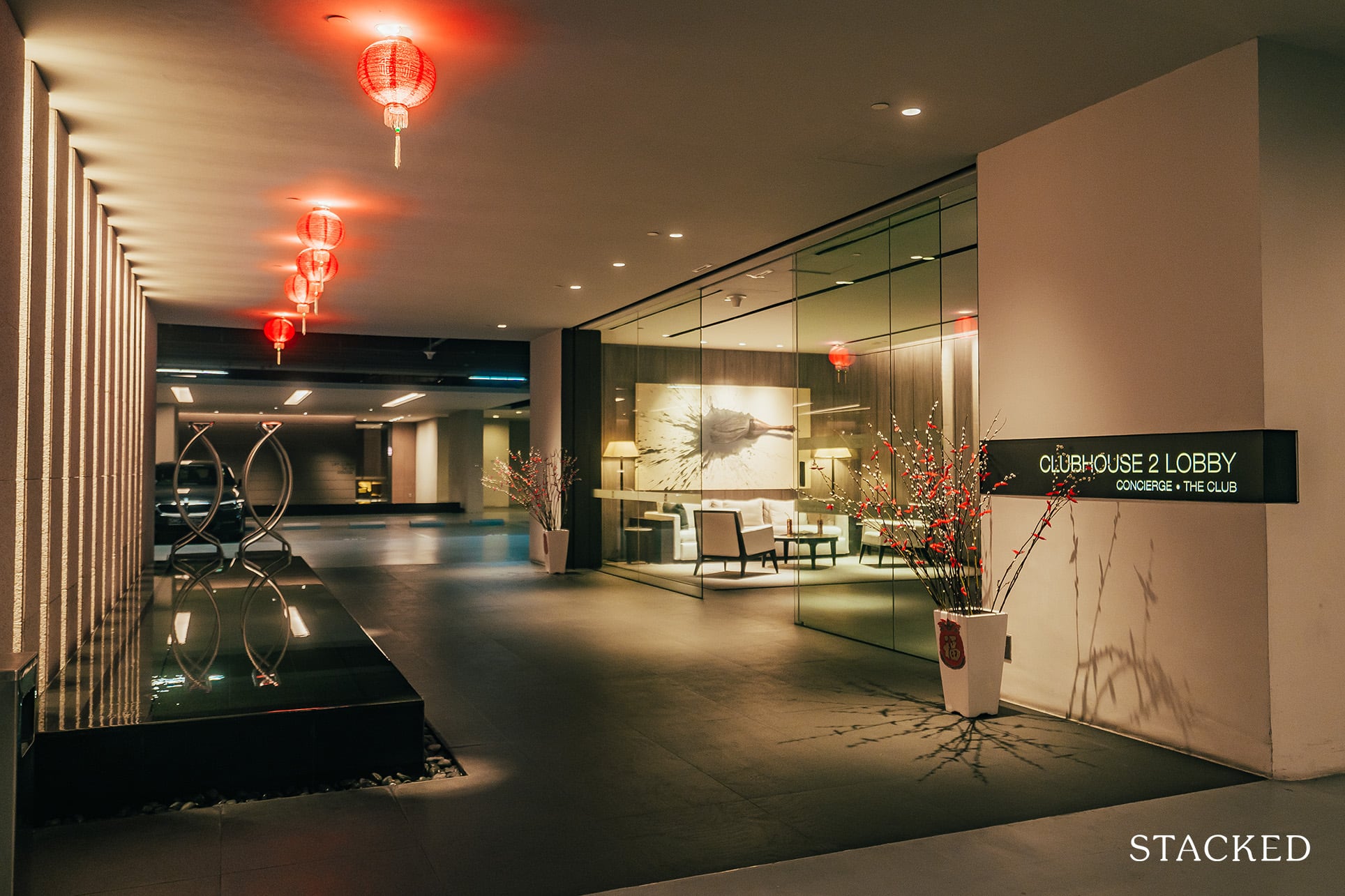
It can be as simple as the guards having better procedures to help lost or wandering seniors (especially in cases such as forgotten or lost ID cards). Concierge services can contact other family members, and provide a lounge or rest area for the resident while sorting things out.
It’s also a good idea to train security or other condo staff on how to deal with dementia patients, as this is likely to be a growing issue in the coming decades. We understand some security companies already do this, but this would definitely be a differentiating factor for an elderly-focused development.
3. Shuttle bus services for seniors
Condos can consider setting aside some shuttle buses just for seniors. This may add some costs, but it’s worth it in the long run. This prevents seniors from competing with students and office workers for the shuttle to the MRT, and it helps if shuttle bus operators can confidently deal with the mobility impaired.
4. Focus on the quality of facilities over number of facilities
Many of the seniors we speak to can’t, or don’t, take advantage of facilities. What use is a clubhouse if you have no one to play your checkers with? Or a tennis court with no opponent?
For condos aimed at seniors, we would say a small number of facilities, with a high degree of quality interaction, would be the goal.
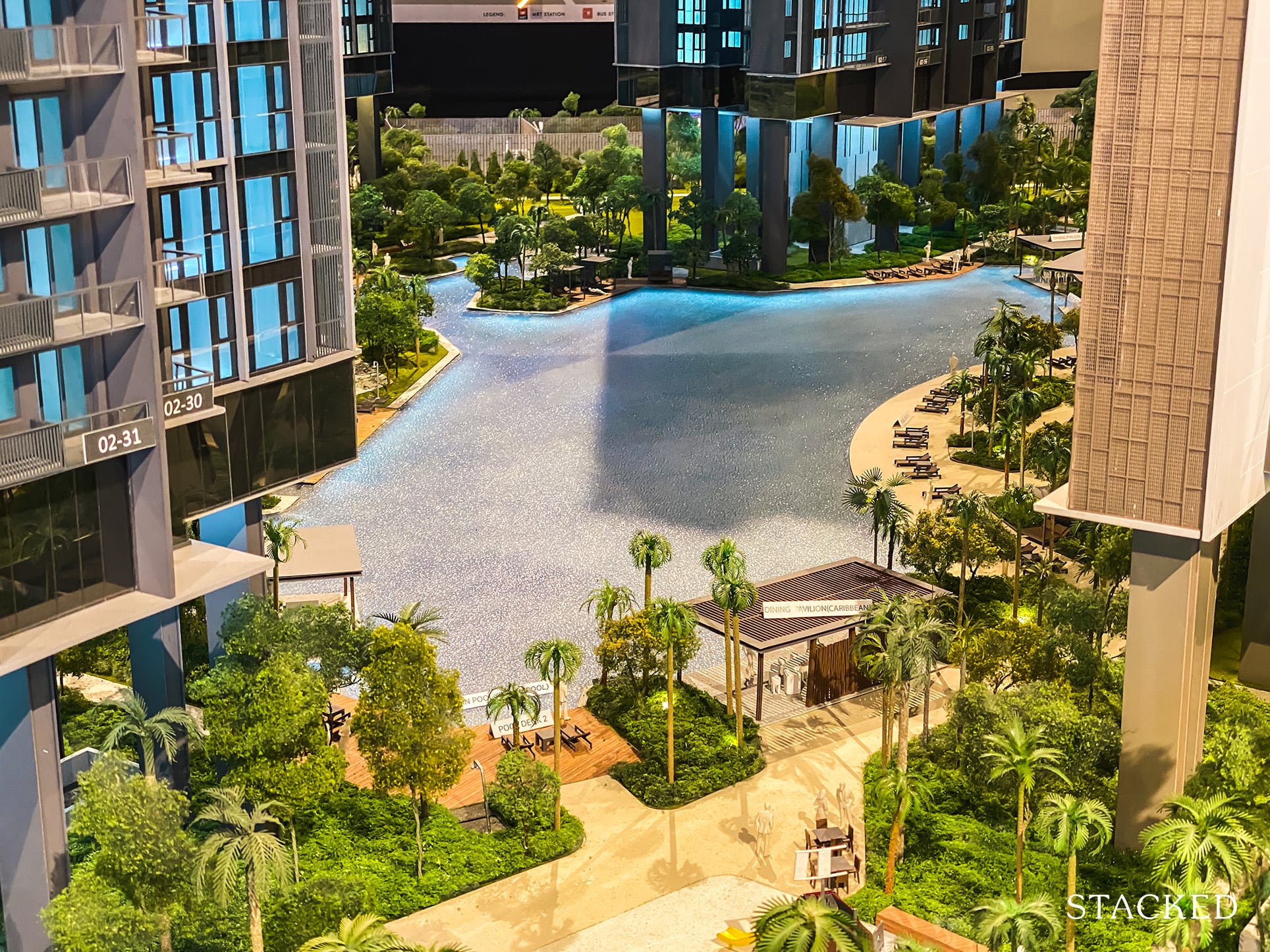
Instead of a regular gym, have one that is focused more on wellness, or equipment that is more useful for simple exercises. The swimming pools should also be revoked at, as the regular handle bars to help you get out of the pool isn’t the most elderly-friendly. Perhaps a lagoon-like sloped entrance like the one at the upcoming Parc Clematis would be a better idea.
This would also deal with the issue of some seniors feeling displaced or isolated. Which leads us to our next point.
5. Lineup of activities
There are lots of studies that have been done on elderly and loneliness, and it doesn’t make for happy reading.
One study has found that lonely elderly have a 59% higher risk of physical and mental health decline, and another has suggested that loneliness can be as dangerous as smoking 15 cigarettes a day or being an alcoholic. Closer to home, a Duke-NUS study revealed that lonely older people not only lived at least three years less than their peers, but also spent less of the rest of their life in good health.
And so as people age and lose family and friends around them, having a community is important to feel connected and a sense of belonging. One way to engage them is to have lots of planned activities.
Ola EC does a good job of this – the facilities involve a wide range of classes, which means quality interaction between vendors, staff, and residents. Flower arranging, cooking, group exercise, etc., are all good grounds for interaction.
One great movie night per week – with refreshments and chit-chat – might do more for senior residents than another dozen landscaped gardens.
Given Singapore’s rapidly ageing population, it’s likely just a matter of time before they factor more into developer’s plans. As the saying goes, niches are riches, and having a very targeted set of consumers just means easier positioning and marketing on the developer’s part.
Ultimately, perhaps a lack of time and focus on this segment of the market probably also has something to do with cost and the way incentives are structured in Singapore. With thinning profit margins, and a lack of time to really plan due to the 5-year ABSD, all this means is that it’s harder to really be innovative in our local property market. It could really be that to serve this market, it’s better to target the luxury sector, than for a mass market development.
This needs to change soon, and the first developers to pick up on it will probably have a good differentiating opportunity in the coming years.
For more on the situation as it progresses, follow us on Stacked. We’ll also update you on new and resale projects alike.
At Stacked, we like to look beyond the headlines and surface-level numbers, and focus on how things play out in the real world.
If you’d like to discuss how this applies to your own circumstances, you can reach out for a one-to-one consultation here.
And if you simply have a question or want to share a thought, feel free to write to us at stories@stackedhomes.com — we read every message.
Ryan J. Ong
A seasoned content strategist with over 17 years in the real estate and financial journalism sectors, Ryan has built a reputation for transforming complex industry jargon into accessible knowledge. With a track record of writing and editing for leading financial platforms and publications, Ryan's expertise has been recognised across various media outlets. His role as a former content editor for 99.co and a co-host for CNA 938's Open House programme underscores his commitment to providing valuable insights into the property market.Read next from Property Market Commentary

Property Market Commentary Why This Once-Ulu Town In Singapore Is Going To Change (In A Big Way)

Property Market Commentary I Lived In Bayshore When It Was ‘Ulu’. Here’s How Much It Has Changed

Property Market Commentary Why The Singapore Property Market Will Be Different In 2026 — And It’s Not Just About Prices

Property Market Commentary 2025 Year-End Review Of The Singapore Property Market: What The Numbers Reveal
Latest Posts

Editor's Pick We’re In Our 50s And Own An Ageing Leasehold Condo And HDB Flat: Is Keeping Both A Mistake?

Pro How A 625-Unit Heartland Condo Launched In 2006 Became One Of 2025’s Top Performers

Property Investment Insights Does Buying A One-Bedroom Condo Still Make Sense As An Investment In 2026

Editor's Pick This HDB Just Crossed $1.3M For The First Time — In An Unexpected Area

Singapore Property News “I Never Thought I’d Be Sued by a Tenant.” What Long-Time Landlords in Singapore Miss

Editor's Pick HDB Resale Prices Finally Slowed in 2025 — Will It Continue in 2026?

Singapore Property News Breaking News: District 23 Condo Sells Out In Under Two Years At $2,120 Psf Average

On The Market Here Are The Cheapest 3-Bedroom Condos in Central Singapore You Can Still Buy From $1.15M

Pro This 21-Year-Old Condo Didn’t Sell Out Initially, Yet Became A Top Performer

Editor's Pick What I Only Learned After My First Year Of Homeownership In Singapore

Singapore Property News Why More Land Doesn’t Automatically Fix Housing In Singapore

On The Market Here Are The Cheapest 4-Room HDB Flats in Central Singapore You Can Still Buy From $490K

Editor's Pick Should We Buy An Old 99-Year Leasehold Condo To Live In: Will It’s Value Fall When The Lease Runs Out?

Pro How A Once “Ulu” Condo Launched In 1997 Became A Top Performer

Editor's Pick I Reviewed A New Launch 4-Bedroom Penthouse At Beauty World



Ryan, great article to raise awareness. If you are available, please get in touch as I am actively working on Senior Living in Malaysia and would like to share our findings after being in operation for 7 years